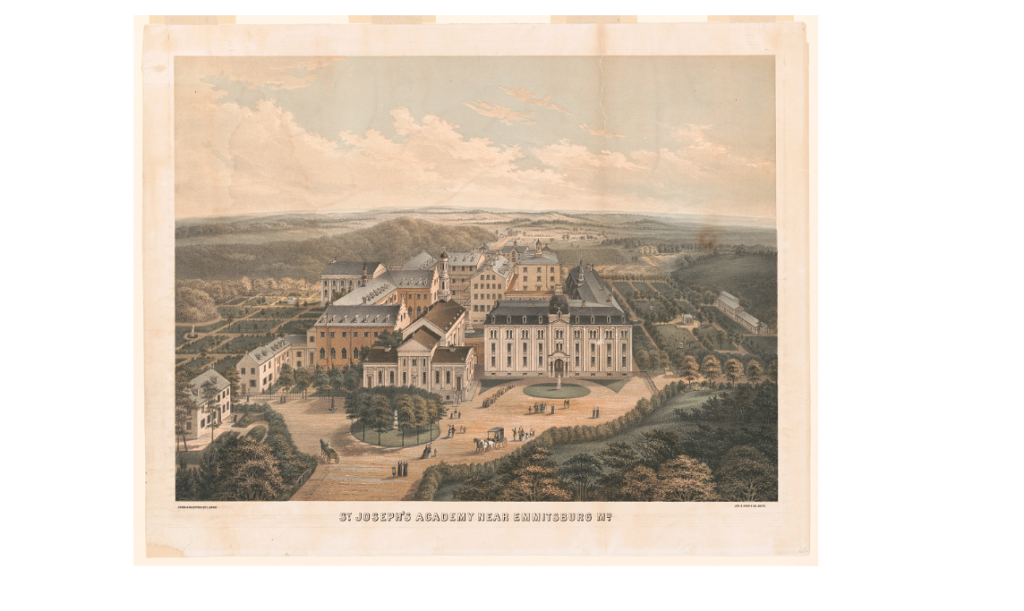Saint Elizabeth Ann Seton: The Mother Who Turned Pain into Schools and Holiness
Have you ever wondered how a woman, widowed and alone with five children, could change the course of education and faith in the United States? This is the story of Elizabeth Ann Seton, a soul who transformed personal storms into seeds of hope. Her life is like a river cutting through rock: it began in New York as a wife and mother, navigated seas of grief, and flowed into the founding of the first free Catholic school for girls and the Sisters of Charity. For you, an American Catholic seeking inspiration from saints close to home, come with me on this journey—a tale of loss, conversion, and a legacy that still educates hearts.
A Daughter of New York: Elizabeth’s Early Years

Elizabeth Ann Bayley was born on August 28, 1774, in New York, into a wealthy Episcopal family. Her father, Richard Bayley, was a renowned doctor, and her mother, Catherine, died when Elizabeth was just three. Raised by her stepmother, Elizabeth grew up surrounded by books and prayers, with a heart sensitive to others’ pain. At 19, she married William Seton, a prosperous merchant, and together they had five children. Life seemed like a clear sky—until the clouds rolled in.
When William’s business failed and he contracted tuberculosis, everything changed. In 1803, seeking a cure, the family traveled to Italy. There, William died, leaving Elizabeth, at 29, a widow in debt with five little ones to raise. “I had nothing but God and my children,” she wrote in her memoirs. But it was in this barren soil that her faith began to sprout.
The Call of Rome: Conversion to Catholicism

In Italy, Elizabeth stayed with the Filicchis, William’s Catholic friends. Their devotion to the Eucharist and the Virgin Mary struck her deeply. She saw something her Episcopal faith couldn’t explain: a God present, alive in the bread and wine. Back in New York, she faced anti-Catholic prejudice—friends abandoned her, and family pressured her to give up. But on March 14, 1805, Elizabeth entered the Catholic Church. “I found in Rome the home my heart was seeking,” she declared.
This choice wasn’t easy. As biographer Joseph Dirvin wrote in Mrs. Seton: “She traded social comfort for a faith society despised” (Dirvin, 1962). A lesser-known tidbit: Elizabeth drew inspiration from Saint Teresa of Ávila, whose works she read during her conversion, seeing in her a model of total surrender to God.
A School in the Shadows: The Start of a Dream
Widowed and penniless, Elizabeth opened a small school in New York to support her children. But anti-Catholic bias shut it down. In 1808, Father William Dubourg of Baltimore invited her to start a Catholic school in Maryland. There, in Emmitsburg, she opened St. Joseph’s Academy in 1809—the first free Catholic school for girls in the U.S. It was a humble shack, but to Elizabeth, every student was a treasure.
She taught reading, writing, and religion, focusing on poor girls no one else would educate. “I want to give children what the world denies them: faith and a future,” she wrote. This was the seed of a Catholic education system that would grow across the country, challenging exclusion and illiteracy.
The Sisters of Charity: A Legacy of Love
In 1809, Elizabeth founded the Sisters of Charity of St. Joseph, the first women’s religious congregation born in the U.S. Inspired by the Daughters of Charity of St. Vincent de Paul, she adapted their rule to the American context, with vows of poverty, chastity, and obedience. The sisters cared for orphans, the sick, and the poor, while also teaching. Now Mother Seton, Elizabeth led with strength and tenderness, even as she faced the deaths of two daughters to tuberculosis and her own frail health.

A fun fact: she wrote hymns like “How Happy Are They,” which the sisters sang to comfort the needy. As Saint John Paul II said at her canonization: “Elizabeth Ann Seton was a pioneer of charity that blossomed on American soil” (Homily, September 14, 1975). Until her death on January 4, 1821, at 46, she planted seeds that still bear fruit.
The Saint of the Little Ones: Elizabeth’s Impact Today

Elizabeth was canonized in 1975 by Saint John Paul II, the first U.S.-born saint. Her legacy lives on in the Sisters of Charity, now with global branches, and in Catholic schools educating millions. In the U.S., she’s a symbol for mothers, educators, and those facing hardship. “Her life shows that holiness is born from the daily cross,” the Pope said at her canonization.
Today, parishes and schools bear her name, like Seton Hall University. She teaches us that faith isn’t a luxury but a force for transformation—whether in a classroom or an entire life.
Milestones of a Life That Built
Let’s pause and look at the stones that paved Elizabeth Ann Seton’s road. Each milestone is a quiet lesson, showing how God uses weakness to build something eternal. Here are the steps that defined her journey:
- Birth (August 28, 1774): Born in New York to a wealthy, influential Episcopal family.
- Marriage to William Seton (1794): At 19, she married and began a family that soon grew to five children.
- Widowed in Italy (1803): Lost her husband to tuberculosis, left alone with her children.
- Conversion to Catholicism (March 14, 1805): Embraced the Catholic faith, defying social prejudice.
- Founding of St. Joseph’s Academy (1809): Established the first free Catholic school for girls in Emmitsburg.
- Start of the Sisters of Charity (1809): Founded the order that would revolutionize charity and education in the U.S.
- Death and Canonization (January 4, 1821 / September 14, 1975): Died at 46 and was declared the first U.S. saint.

I’m Jonathan Raeder, scholar of philosophy and the Catholic faith, deeply dedicated to exploring the teachings and traditions of the Church. Through years of study and reflection, I have gained a thorough understanding of Catholic philosophy, theology, and spirituality. My intention is to connect intellectual reflection with lived faith, shedding light on the richness of Catholic thought for all who wish to do so.

